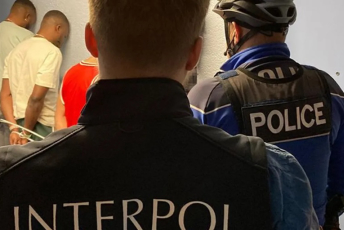In the five days between 26 June and 1 July 2019, Senegalese customs seized 1.3 tons of cocaine from two Italian-flagged ships at the Autonomous Port of Dakar. This was the second largest haul of cocaine in Senegal since 2007. A further seizure of almost one ton from a vessel destined for Dakar took place on the high seas in early November.
On 26 June a tipoff from a local customs official resulted in a Senegalese customs search. They discovered 238 kg of cocaine in four Renault Kwid vehicles on board an Italian container that had departed from the port of Paranagua in Brazil. This put the ports authorities on high alert and resulted in the second seizure on 1 July. Here 800 kg were discovered on the Grande Nigeria, another Italian vessel coming from Brazil, also transporting new vehicles.
Coordinated international support for Senegal’s navy from Spain, Portugal and the United States resulted in the November seizure. The size of the haul points to Europe as the end destination, although some may have been kept for local distribution.
The two most recent events both involve the company Grimaldi, and both had the same modus operandi. This shows the growing role that the Dakar port is playing in international drug trafficking. However other seizures have also been reported along Africa’s west coast and its strategic ports.
Located just east of Dakar, the Autonomous Port of Dakar is an important transit zone for goods from all over the world. It is the third largest multi-modal port in West Africa, after those of Lagos and Abidjan. It is economically significant for Senegal as duties on goods flowing through the port contribute up to 90% of customs revenue to state coffers.
Dakar’s natural geographic position in Africa and on shipping routes between Latin America and Europe makes it an attractive destination for drug trafficking. A customs officer who wished to remain anonymous told ENACT, ‘These seizures indicate that the route has been tested several times in the past.’
The police made numerous arrests in connection with the first and second cocaine seizures, including some ports authority officials representing Latin American cartels in Senegal, at least three freight forwarders, and the first vessel’s captain and his assistant.
However the seizures are only one part of drug trafficking through Dakar’s port. The flow of drugs into the port and then on to other destinations requires the complicity of local officials. Corruption is found all along the drug trafficking chain. Freight forwarders play a key role in import and export, and are reportedly involved in drug trafficking in predominantly transhipment locations. According to local media, they are used as mules to remove the drugs from the containers.
Sharing information in good time and rapid inter-agency cooperation were key elements in the latest seizures. While this is to be applauded, if Dakar is becoming a port of choice for criminals, then responses beyond seizures are required to keep pace with the wily traffickers of the high seas and their portside allies.
Mouhamadou Kane - Researcher, ENACT project, ISS







